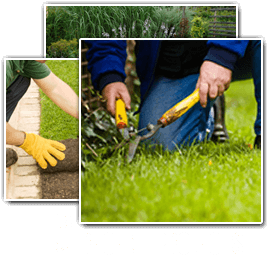Richmond property owners choose to remove trees and buildings from their property for many reasons. Perhaps you’re interested in knocking down your old, dilapidated garage so you can build a newer model in its place. Or, maybe you’ve recently realized that the old sycamore in your front yard is badly rotted and threatening to collapse on your home. Whether your needs are urgent or are a matter of personal or aesthetic preference, it is vital to take the proper steps to ensure that your construction demolition or tree removal project is completed in the most efficient and safe manner possible.
Construction Demolition
Whether you’re taking down a three-story home or a small shed, the first aspect of demolition preparation is always the same–prepare the site. If there are any utilities such as water, gas, or electricity running into the building, be sure that you have contacted the proper authorities to have these shut off prior to the demolition date. All potentially hazardous items, such as flammable materials, should be removed from the premises, and property owners need to be absolutely sure that there is no asbestos present inside the building. If there is any doubt as to whether or not asbestos is present in the building slated for demolition services, be sure to contact a professional to do asbestos testing and, if needed, perform abatement services before the demolition takes place.
Social preparation is also important, especially if you’re located in a high-traffic area. Be sure to let neighbors and other people who may be near the site know what is going on so everyone can be mindful of the potential danger and plan to avoid the premises. If you’re in a rural region, this step may not be relevant, but in cities where there is considerably more congestion, written notices or verbal warnings may be in your best interest. It is also important to have an escape plan established so you and all others present can get to safety should the need arise. A first-aid kit should be on site as a precaution as well.
Once you’ve fully prepared the area, the actual work can begin. Be sure to use the proper tools corresponding to the type of the job–if the structure is small, such as a tree house, pool, or deck, you may only need a sledgehammer. Larger structures may require backhoes. The best way to approach your project will differ depending on the type of the structure in question, and whether or not there are any obstacles that need to be protected from the affects of the collapse. If you have no previous experience with performing or planning a demolition, it may be a good idea to have a professional handle the project or to have a knowledgeable person approve your demolition plan prior to starting. From removing non-load-bearing walls to ensuring a controlled collapse, it is important to make informed, thoughtful decisions to ensure success. The thought you put into planning your demolition will directly affect your overall safety, the amount of time it takes to complete the project, and the magnitude of your future cleanup efforts.
If you don’t have the time or energy to remove demolition debris from your property after the structure has been taken down, consider the services of a professional junk hauling team or dumpster rental service. With just one phone call, you can have your concrete, wood scraps, and other unwanted trash taken away, leaving you with a clean yard that is free of safety hazards.
Tree Removal
The initial preparation for Richmond tree removal is similar to building demolition. It is vital to examine the area for obstacles such as other trees or utility lines and communicate with your neighbors to ensure that your intentions to remove a tree near a property line will not cause disputes or inspire legal action. As with construction demolition, it is also important to have an escape plan.
The exact approach for removing a tree and stump may differ depending on the incline of the ground, the size of the tree, etc. Typically, it is best to fell a tree in the direction it is naturally leaning. Using a chain saw for larger trees and a handsaw for smaller ones, make a V-shaped notch into the side of the tree that matches the direction you want it to fall. This is sometimes called the undercut, guide slot, or the aim slot, and its depth should be roughly a quarter of the tree’s diameter. Next, make a similar notch on the opposite side of the tree, two inches above the undercut–this second step is known as the back cut. These cuts should sufficiently weaken the tree and allow it to fall. Be sure to move away, as falling trees can be unpredictable. Once the tree on the ground, remove the branches from the bottom up, starting from the side opposite the one you’re standing on (to protect you from the chainsaw and any unexpected movements the tree may make as a result of being de-limbed).
Many people like to use the tree limbs and trunk as firewood, but others simply want the waste off their lawn as soon as possible. For prompt pickup of your debris, right down to the very last twig, call in your local trash removal service. They’ll have the means and the manpower to restore your yard to its full beauty and eliminate all safety hazards that may be associated with the debris.
Whether you opt to call in a professional or take on the demolition project yourself, it is best to be completely educated about the best practices and safety measures so you can be completely comfortable with the changes being made to your property.




